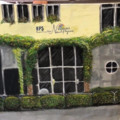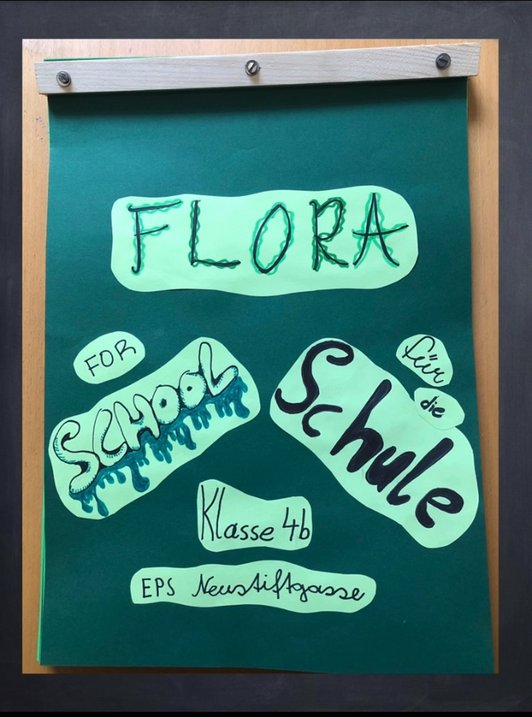Flora for School
Schule
Klasse
Schuljahr
Projektleitung
"Flora for School” is a bilingual project that the 4B at the European Primary School worked on over the course of three months. It combined critical thinking about sustainability and the environment with creative writing, artistic expression, and political activism. In various ways, the 4B learned, contemplated, created, and campaigned make the school entrance greener. In this way, they took the topic of a sustainable future and applied it to their personal surroundings and everyday experience.
The project started with the children thinking about how the entrance of their school looked and made them feel. They agreed that seeing the grey, dirty, and boring front of the building first thins every morning made them feel sad and unmotivated. Since the class is a certified Nature Class they knew that natural greenery would be both attractive and good for the environment.
As a next step they drew their plans for greenery onto a photo of the school entrance – taking inspiration from examples of other buildings in Vienna and talking about what kind of plants would grow best on walls and fences. The sketches were used to design a large collaborative painting and with help from a daycare group leader, the children created their own canvas, drew an outline of the entrance, and used acrylics to paint flora for their school.
After visualizing their ideas, they set out to write letters to their District Council about why we want plants for our school. They wrote about how plants are good for balancing CO2 levels, providing shade in summer, and create a habitat for bees and other insects. They also reasoned that seeing beautiful vines and flowers at our school entrance would make kids happy to enter the school building and could even attract more pupils.
The project took a turn towards political activism, as the children presented their letters and art to the District Chairpersons of the seventh district and met with the District Council to talk about their ideas. To document their work, they combined the letters and drawings into a comprehensive book and used the class tablet to create a digital presentation of the project.


